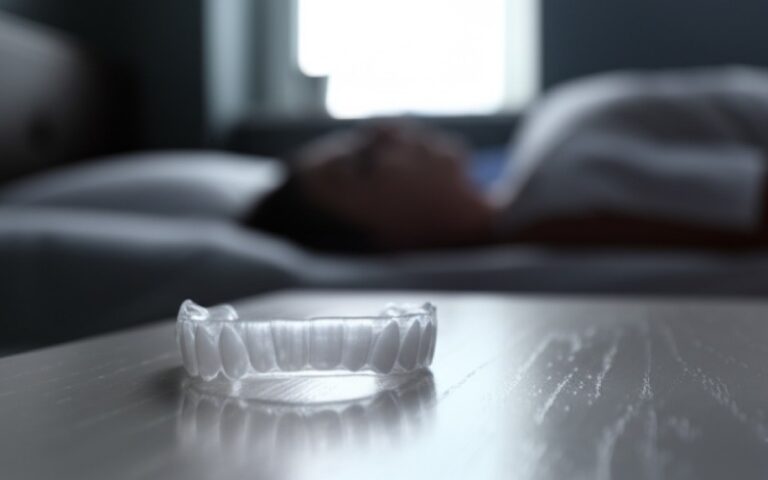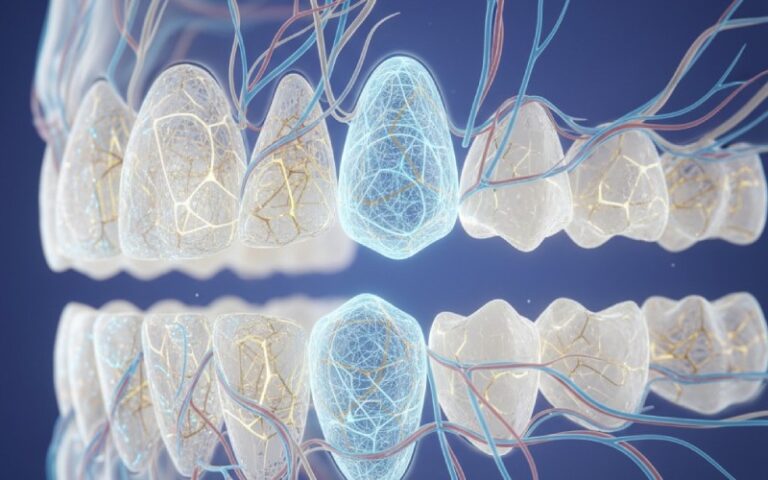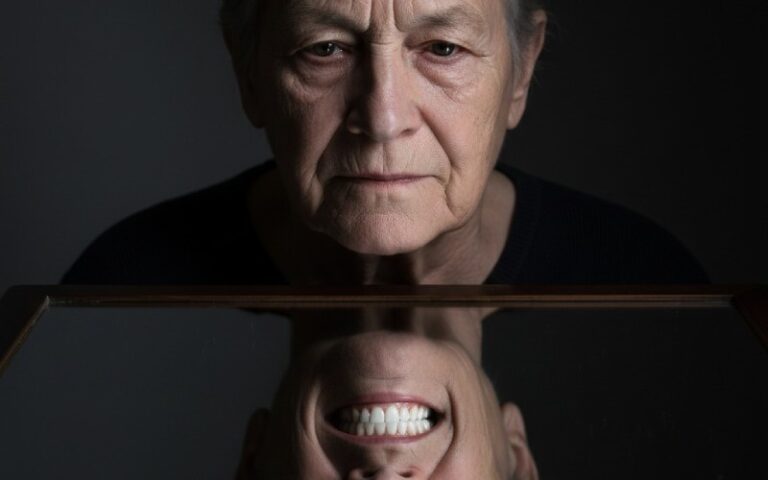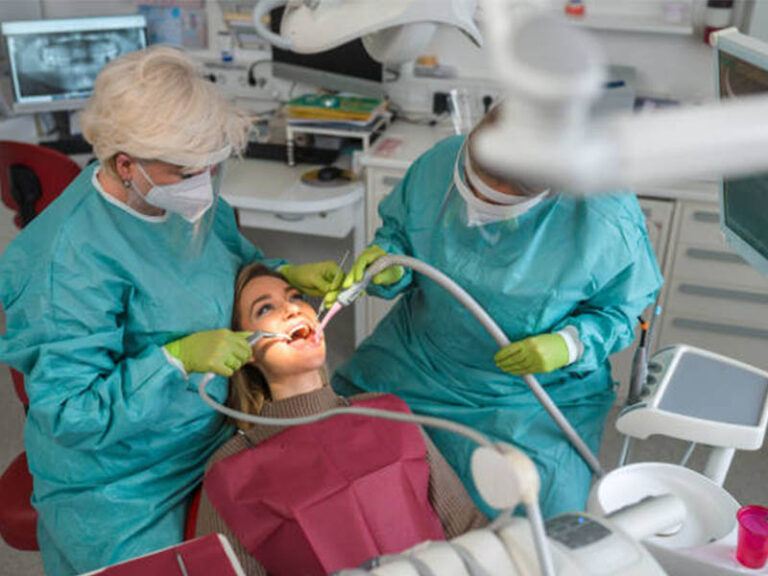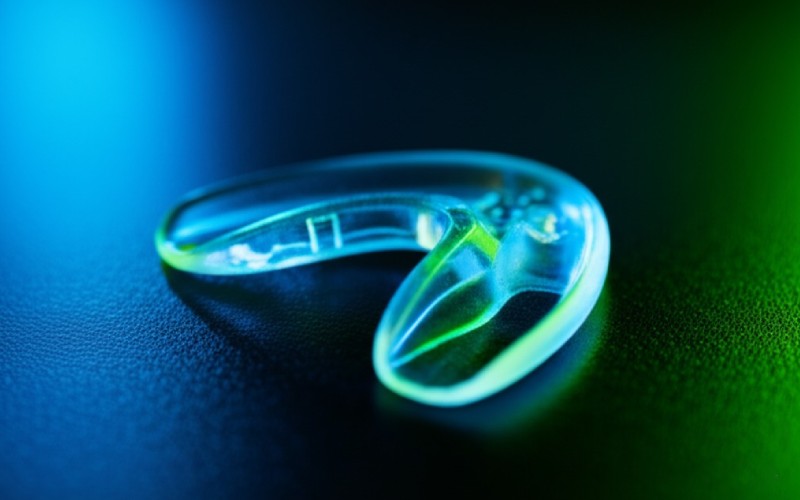
Le guide du dentiste sur les appareils NTI : comment utiliser un appareil NTI pour soulager les patients
In this article, I will give you a clear, simple guide to NTI appliances for dentists. You will learn what an NTI is, how it works, and which patient is a good fit. I will show you how to use an NTI appliance to bring real relief to your patients. This guide will help you add a powerful tool to your practice.
Table des matières
What Exactly Is an NTI Appliance?
Let’s start with the basics. What is this little device? The letters NTI stand for Nociceptive Trigeminal Inhibition Tension Suppression System. That is a very long name. But the idea behind the NTI is simple. The NTI is a small, removable dental appliance. Think of it as a tiny splint. It is not like a big, bulky mouthguard. The NTI appliance is designed to fit over just the front teeth, usually the upper or lower two central incisors.
This small appliance is custom-made for each patient. Its main job is to prevent the posterior teeth from touching. When a patient wears the NTI, their back teeth and canine teeth cannot contact. This simple separation is the key to how the NTI works. The device is usually made from a hard acrylic material. Its small size makes it more comfortable for many patients than a traditional, full-arch guard. The NTI is a specific tool for a specific muscle problem.
The NTI-TSS (Tension Suppression System) is the official name you will see. This device is cleared by the FDA to prevent migraines. It is not a dentier ou un dispositif de retenue. It is a therapeutic device. The goal of this appliance is not to protect every tooth from wear. Instead, the goal of the NTI is to reduce intense muscle contractions in the jaw. This makes the NTI a unique kind of dental appliance.
How Does the NTI Device Provide Pain Relief?
Now you know what an NTI is. So, how does it provide pain relief? The magic is in how the NTI changes a patient’s bite. When a person clenches or grinds their teeth, they use powerful jaw muscles. The intensity of this muscle contraction is very high, especially when the back teeth touch. This intense activity can lead to muscle tension, jaw pain, headaches, and even migraines. The NTI is designed to stop this.
The NTI device works by taking advantage of a natural reflex. The device has a special part called a discluding element. This element only allows the front teeth to touch it. When only the front teeth make contact, the jaw muscles cannot clench with the same force. The body’s reflex is to relax the jaw muscles. This process is called nociceptive trigeminal inhibition. The NTI essentially tells the jaw muscles to take a break. This muscular relaxation is what leads to relief from pain.
By reducing the force of the clench, the NTI helps lower muscle tension. This can prevent the chain reaction that leads to tension-type headaches and migraines. The patient may still try to grind, but the NTI prevents the powerful contact of the posterior teeth. This lessens the strain on the entire temporomandibular system. The NTI provides relief by tackling the source of the muscular pain, not just covering up the symptom.
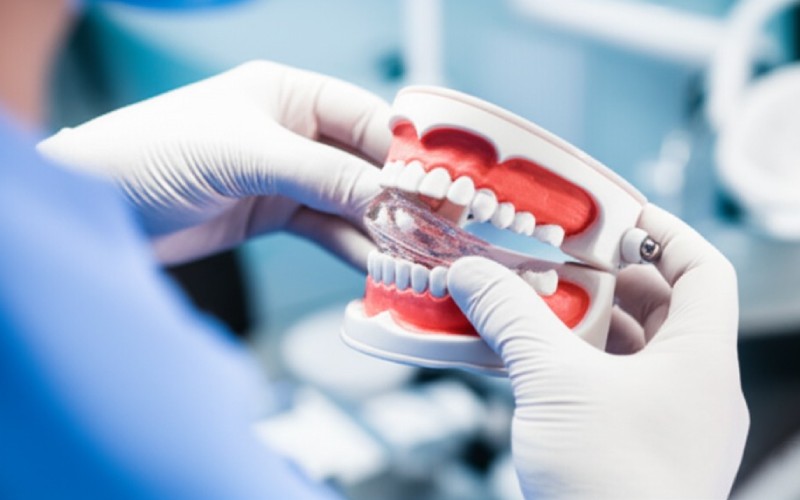
What Is the Difference Between an NTI Device and a Full-Arch Guard?
As a dentist, you are familiar with night guards. Many of us prescribe a full-arch occlusal splint for bruxism. These guards cover all the teeth on the upper or lower arch. They act as a protective barrier. They prevent the upper and lower teeth from grinding against each other. This is great for preventing tooth wear. But a full-arch guard does not stop the patient from clenching. A patient can still bite down hard on the guard, which can keep the jaw muscles tense.
The NTI is completely different. The main difference between an NTI device and other guards is its size and function. The NTI is much smaller. Its small size means it only covers the anterior teeth. Its purpose is not just to protect the teeth, but to change the muscle activity. The NTI works to prevent intense clenching. Full-arch night guards do not. This makes the NTI a therapy device, not just a protective guard.
Think of it this way. A standard guard is like putting a cushion between a hammer and a nail. It protects the surface, but the force is still there. An NTI is like taking the hammer away. It reduces the force itself. For patients whose main symptom is muscular pain, like headache or jaw ache, the NTI is often a better choice. The NTI targets the cause of the muscle strain directly.
Which Patient Is the Right Candidate for NTI Therapy?
How do you know which patient needs an NTI? The key is to identify the right indication. The ideal patient for an NTI is someone who suffers from symptoms caused by clenching and grinding. This includes patients with frequent tension-type headaches, migraines, or sore jaw muscles. If a patient tells you they wake up with a stiff jaw or a headache, they are a great candidate for NTI therapy.
You should look for signs of heavy bruxism. But remember, the NTI is best for muscular pain. A patient with severe tooth wear might still need a full-arch guard for protection. However, if they also have pain, an NTI could be the right treatment. The NTI is especially good for migraine treatment. It is one of the few dental devices cleared by the FDA for this purpose. Many patients who grind their teeth are looking for relief from pain, not just tooth protection.
When you check a patient’s bite, ask them about headaches. Ask about jaw pain. If they say yes, you may have found a perfect use for an NTI appliance. The NTI is not for every single patient. A specialist should check patients with complex TMJ problems, like clicking or popping joints. But for the large number of patients with muscular pain from bruxism, the NTI is a fantastic treatment.
How Do You Prescribe and Fit an NTI Appliance for a Patient?
Prescribing an NTI is a straightforward process. First, you must diagnose the patient correctly. Once you identify that their pain is likely from clenching, you can prescribe the NTI. The next step is to take an impression of the patient’s teeth. You can use a traditional impression or a modern digital scan. You will need a good model of either the maxillary or mandibular arch. Most NTIs I prescribe are for the maxillary arch.
The NTI needs to be adjusted perfectly for the patient’s bite. When the patient closes their mouth, only their bottom front teeth should touch the NTI. There should be no contact on any posterior teeth. You must check this carefully. Use articulating paper to check the occlusion. You want a small, centered mark on the NTI from the opposing incisor. You also need to check for lateral movements. The patient’s canines should not touch during side-to-side motions.
Making these small adjustments is very important. A well-fitted NTI will be comfortable and effective. An NTI that is not fitted right will not work and may cause other issues. You will teach the patient how to wear the device. The NTI is a powerful device, and it is our job as a dentist to make sure it is used correctly.
Can an NTI Help with TMJ and Migraine Treatment?
Yes, absolutely. This is where the NTI appliance truly shines. Many TMJ problems, or TMD, are related to muscle overwork. When the jaw muscles are always tense, it can lead to inflammation and pain in the temporomandibular joint. The NTI helps by forcing these muscles to relax. When the muscles are not working so hard all night, the jaw joint gets a chance to rest and heal. This can provide amazing relief for a patient with muscular TMJ pain.
The NTI is also a proven tool for migraine treatment. The FDA has cleared the NTI-TSS device to help prevent migraines. How? Many migraines are triggered by the trigeminal nerve. Intense clenching at night can overstimulate this nerve, leading to a migraine headache. Because the NTI reduces the intensity of clenching, it calms the nerve signals. This can reduce the frequency and severity of migraine attacks for many patients.
For patients who have tried everything for their headaches, an NTI can be life-changing. It is a simple, non-drug therapy. The NTI helps you, the dentist, treat a problem that goes beyond just the tooth.
What Is the Role of a Dental Lab in Creating an NTI?
Le laboratoire dentaire is your partner in creating a high-quality NTI appliance. After you take the patient’s impression or scan, you will send it to a dental lab with a prescription. Your prescription will specify that you want an NTI device. The lab technicians will then use your model to create the custom-fit appliance. A good dental lab is key to a successful NTI treatment.
Most labs today can make an NTI from hard acrylic. Some labs also offer 3D-printed NTIs. These can be very precise. The lab will build the NTI on the model of the patient’s arch. They will create the small shape that covers the front teeth and add the discluding element. The lab will return the finished NTI device to you. It will be ready for you to fit in the patient’s mouth.
You should work with a dental lab that has experience making NTIs. They will understand the specific needs of this appliance. They know how to shape the device for comfort and function. A good relationship with your dental lab will make the whole process smooth. It ensures your patient gets a durable and effective NTI.
Are There Potential Side Effects When a Patient Uses an NTI?
Like any dental treatment, the NTI has potential side effects. It is our duty to understand them and inform our patient. The most significant side effect to watch for is a change in the patient’s bite. Because the NTI keeps the back teeth apart, there is a small risk of the posterior teeth super-erupting. This can lead to an anterior open bite. This means the front teeth no longer touch when the patient bites down without the appliance.
To prevent this side effect, you must give the patient clear instructions. The NTI is designed for sleep. The patient should not wear it all day long. Regular follow-up visits are also very important. You need to check the patient’s occlusion at these visits to make sure no unwanted changes are happening. If you see any signs of an open bite developing, the patient may need to stop using the NTI.
Most patients use the NTI without any problems. The risk of a bite change is low when the device is used correctly and monitored by a dentist. Other minor side effects can include initial discomfort or soreness of the front tooth that contacts the splint. This usually goes away after a few nights. Open communication with your patient will help manage any side effects.
What Instructions Should You Give Your Patient on How to Use an NTI Appliance?
Clear patient instructions are critical for success with an NTI. When you deliver the appliance, you need to explain how and when to use it. First, show the patient how to place and remove the device. Explain that they should only wear the NTI appliance while they sleep. It is not meant for daytime use. This is the most important rule to prevent changes to their bite.
Tell your patient that their front tooth might feel a little tender for the first few days. This is normal as their muscles adjust. Instruct them to clean their NTI every morning with a toothbrush and cool water. They should store it in the case you provide. Explain the goal of the NTI: to relax their muscles and reduce the pain from their headache or jaw symptom.
Schedule a follow-up appointment a week or two after they start to wear the NTI. This allows you to check the fit and the patient’s bite. It also gives the patient a chance to ask questions. Good education helps the patient trust the treatment and use their NTI device correctly. This teamwork between the dentist and the patient leads to the best results.
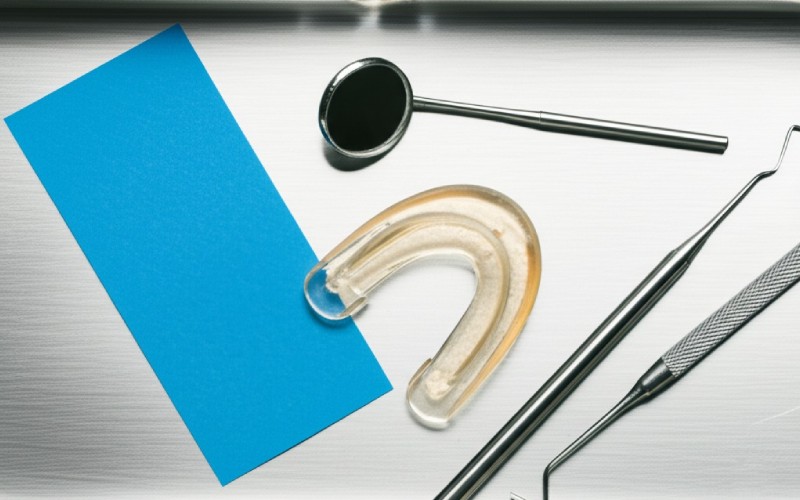
Why Should the NTI Appliance Be Part of Your Dental Treatment Options?
So, why should you add the NTI to your practice? Because it solves a very common and painful problem for your patients. So many people suffer from headaches and jaw pain caused by bruxism. The NTI offers a simple, effective, and non-drug therapy. It allows you, as a dentist, to provide significant relief and improve your patients’ quality of life. The NTI is a powerful tool.
Offering the NTI appliance can also set your practice apart. It shows you are using modern treatment options to address complex issues like migraine and TMJ pain. Patients who find relief will be your biggest fans. They will tell their friends and family about the dentist who finally solved their headache problem. This is a great way to build a loyal patient base.
The NTI is one of the most satisfying procedures. The NTI is more than just a piece of plastic. It is a device that can bring profound relief. I encourage you to explore this therapy. It will make you a better dentist and bring new hope to your patients who suffer.
Key Takeaways to Remember:
- The NTI is a small dental splint that fits over the front teeth to reduce muscle contraction from clenching.
- It works by keeping the posterior teeth apart, which causes the jaw muscles to relax.
- The NTI is an excellent treatment for patients with tension headaches, migraines, and muscular jaw pain.
- It is different from a full-arch guard because it is a therapeutic device designed to reduce muscle force, not just protect teeth.
- Proper fitting by a dentist and correct patient use (at night only) are essential to prevent side effects like an open bite.
- Regular follow-up appointments are necessary to monitor the patient’s occlusion and the success of the treatment.

